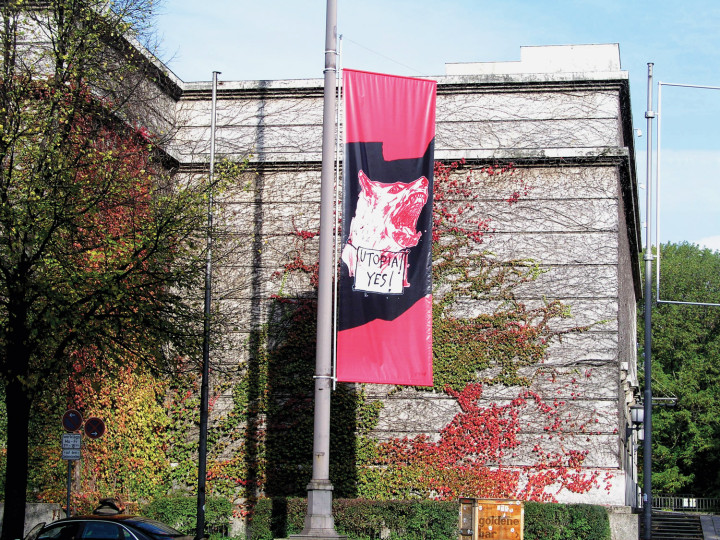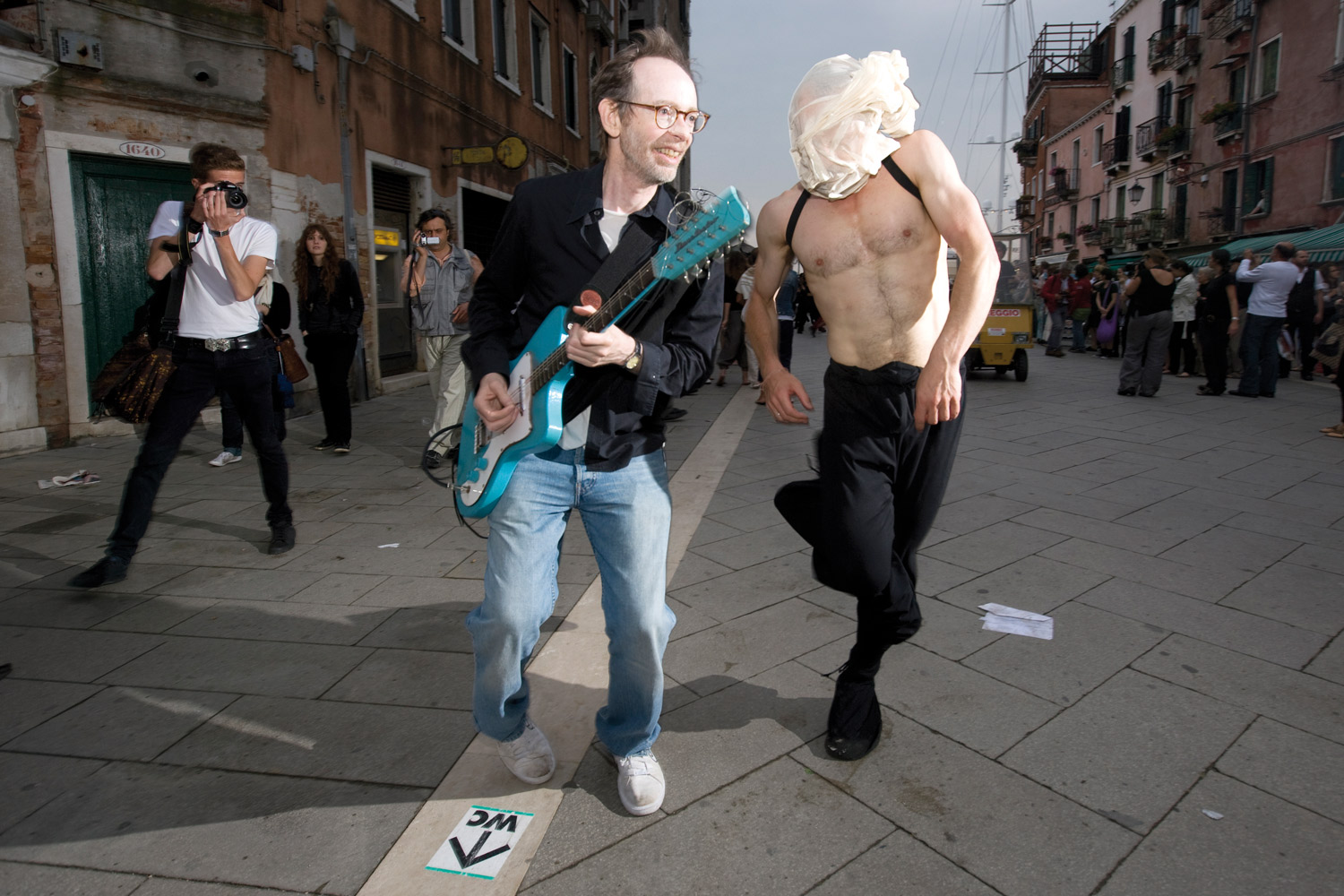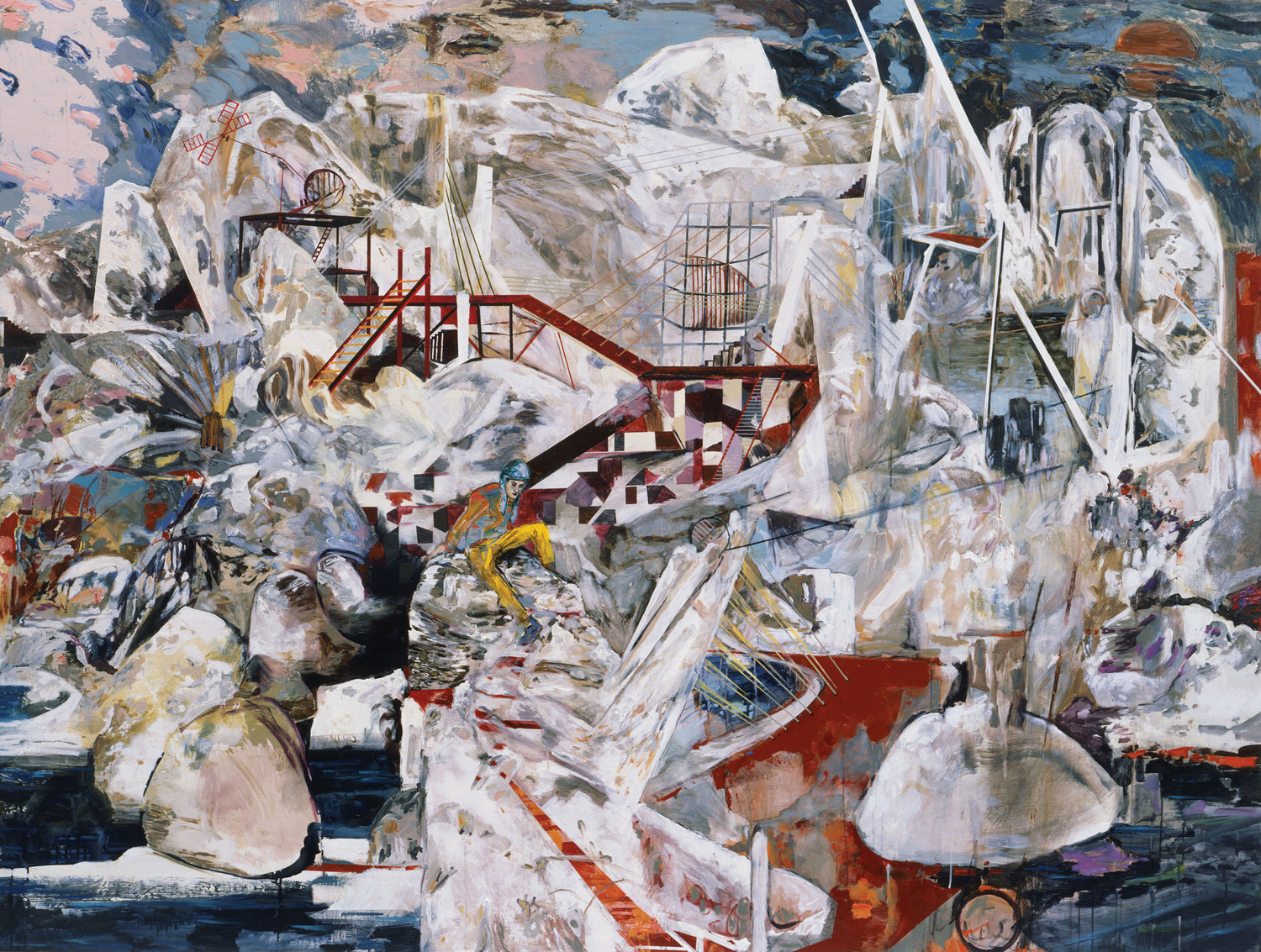
“A twenty-first-century biennial will utilize calculated uncertainty and conscious incompleteness to produce a catalyst for invigorating change whilst always producing the harvest of the quiet eye.” – Cedric Price
A for ARCHIPELAGO
For the literary critic Édouard Glissant, biennials can either be like continents (rock solid and imposing) or like archipelagos (welcoming and sheltering.) In Glissant’s words: “The idea of a nonlinear time [is] implicit in this idea … the coexistence of several time zones would of course allow for a great variety of different contact zones as well.” The biennial as a reciprocal contact zone can mediate between museum and city. New biennials should invent new exhibition formats. The current multiplication of biennials means that rather than copying the formats of other biennials, the challenge is to provide new spaces and new temporalities. It is urgent to generate a situation that is receptive to interesting, more complex spaces combining the large and the small, the old and the new, acceleration and deceleration, noise and silence. According to Glissant, biennials today need to provide new spaces and new temporalities in order to achieve what he calls a mondialité: a difference enhancing the global dialogue.
B for BRIDGE
One great potential of the biennial/triennial is to be a catalyst for different layers of input in the city. The multiplication of these events can be seen positively in terms of the multiplication of centers. The quest for the absolute center that dominated the large part of the 20th century has opened up to a polyphony of centers in the 21st, and biennials are making an important contribution to this. They can also form a bridge between the local and the global. By definition, a bridge has two ends, and as the artist Huang Yong Ping recently pointed out: “Normally we think a person should have only one standpoint, but when you become a bridge you have to have two.” This bridge is always dangerous, but for Yong Ping the notion of the bridge creates the possibility of opening up something new. By resorting to the notion of chance, one can gain access to enlightenment.
C for CRITICAL MASS
Often the biennial is a trigger for a dynamic energy field that radiates throughout a city. This works particularly well when all the exhibition spaces and institutions in a city participate in a joint effort to form a critical mass. Biennials and other large-scale exhibitions can also trigger many self-organized side events in a city, such as warehouse exhibitions, student shows and counter shows. One great potential for a biennial is that very often it becomes a spark or catalyst in the local scene.
D for DEATH OF THE BIENNIAL
In his paper presented at the inaugural conference of the Yokohama Triennale in 2007, Daniel Birnbaum compares the eventual exhaustion of the format of the biennial with the death of the novel. This does not mean that no more biennials will take place; on the contrary, we are facing a situation where there are more than 100 biennials and triennials worldwide. But Birnbaum wonders if as a form for experimentation and innovation the biennial will play out its role. His paper concludes with hope: a new start is likely to take place beyond the European continent.
E for ÉTONNE-MOI !
In a now legendary exchange, Sergei Diaghilev challenged Jean Cocteau to surprise him. His “Étonne-moi !” will always be important for biennials. To encourage the unexpected, the curatorial position should be open to surprise.
F for FUTURE
Biennials are a continuously articulated struggle between the past, the present and the future. This is a vision of history under perennial negotiation. Working through past biennial gestures, of course, is hardly novel. What, then, of the future of the biennial? We should emphasize that visions of the future across almost all phenomena (a) evolve over time and (b) proliferate. The future of the biennial, in other words, is both varied and plural.
I for IN-BETWEEN
The biennial is an occasion on which to create new alliances; it is about going beyond city-branding strategies, leading to collaboration and new dialogues. In the context of the Lyon Biennial, Stéphanie Moisdon and I aim to create a dialogue with the city (the “Résonance” program will involve more than eighty events around Lyon,) as well as with the wider region, and to instigate new partnerships. For this reason “Tres Bienn” joins the Istanbul, Athens and Lyon biennials to develop intercultural exchanges. This issue of new alliances is particularly important at a moment when we no longer have any identifiable ideological, generational or stylistic movements, which once created international links.

M for MEMORY
The situation of a biennial is complex. When we try to work out how to deal with this complexity, it is important not to reduce our reflections to one single model, but to study several different ones, both historical and contemporary, that take an experimental approach to this complexity. At this moment of intense innovation within the field of contemporary art — a moment during which this very field has entered the public consciousness as arguably never before — it is vital that biennials proceed intelligently and that we act not only with an awareness of what our contemporaries within the field of art are undertaking, but also with an understanding of what has come before and what is being undertaken in disciplines parallel to our own.
N for NEW GEOGRAPHIES
The French historian Fernand Braudel explains that in the longue durée (long duration) there can be seismic shifts, like that in the 16th century when the paradigm shifted from the Mediterranean to the Atlantic. We are living through a period in which the center of gravity is transferring to new worlds. The second half of the twentieth century was very much a time of the “Westkunst,” to quote from the title of Kasper König’s and Laszlo Glozer’s exhibition. The early 21st century is seeing a polyphony of centers and above all the rise of new centers in China, India and the Middle East. Since the ’90s, biennials have contributed considerably to this new cartography of art.
O for ONGOING
What happens between biennials is very important. If a biennial takes place in a city and then nothing happens for two years until the next biennial comes along, the danger is that it will be like a firework in a desert. Ideally a biennial should be a permanent process, an ongoing organic activity. Most biennials are organized in short time-frames and the operation for organizing them becomes increasingly reduced. Curators need to resist this and find a more reasonable framework in which to work. Changing the format and creating interim events, so that the firework becomes an ongoing flame, might be very helpful in overcoming this problem. The biennial as a project could build up through sedimentary levels, rather than being seen as a tabula rasa that starts afresh every two years and negates its own history. There should also be more consideration of what happens between the big events of the biennial. In most cases, the opening will attract a lot of visitors, but shortly afterwards, it is as if the off-button had been pushed. What we hope to see is the ongoing flame being relayed from one party to the next, rather than a one-time event in the name of cultural tourism that contributes little to the local art scene. Instead of a sprint, we opt for the long-distance running model. The goal is for a biennial that is sustainable and can foster local development, by building a long-term laboratory that will accumulate important archival materials. Biennials can have a life of their own as a self-evolving entity.
R for RULES OF THE GAME
Biennials should invent new rules of the game, new practices and new ways of doing things. My first “eureka moment” in terms of curating was as a teenager when I met Fischli & Weiss in 1985. They sent me to see Alighiero Boetti in Rome and soon afterwards I met Christian Boltanski in Paris. These conversations freed me up in terms of curating. I started to think about exhibitions and biennials that were unlike anything I had thought about before. They taught me the importance of experimentation, that there was not one prescriptive way of doing biennials. They also taught me that we only remember exhibitions that invent new rules of the game. A model for the invention of new rules of the game is Oulipo, a literary group that functions like a permanent research laboratory for innovation.
S for SELF-ORGANIZATION
In large-scale shows, we should explore notions of self-organization that reject the “top-down master plan.” A model for this approach can be found in urbanism, as practiced by Yona Friedman, Cedric Price, Team X or Oskar Hansen with his visionary “open form,” who all questioned the idea of the “master plan” in the ’50s and tried to build in moments of self-organization and even “bottom-up” organization. Applied to the biennial, this might mean, for example, exhibitions within the exhibitions that are temporary autonomous zones.
T for TRANSNATIONAL
The question of transnational exhibitions seems to be one of the key issues running from the ’90s through to the present. In opposing what he called the “irreversible” aspects of globalization (uniformity, homogeneity), Étienne Balibar once described to me what he framed as the need for artists and exhibitions to become nomadic, physically and mentally traveling across borders. He described how going beyond national boundaries would allow languages and cultures to spill out in all directions, to broaden the horizon of translating capacities. In this way, Balibar said, “Exhibitions would be borderlines themselves.”
U for UNBUILT ROADS
For every planned biennial that is carried out, hundreds of other projects around the world remain unrealized and invisible to the public. Unlike unrealized architectural models and projects submitted for competitions, which are frequently published and discussed, public endeavors in the visual arts that are planned but not carried out ordinarily remain unnoticed or little known. I see these unrealized projects as the most important unreported stories in the art world. As the philosopher Henri Bergson showed, realization is only one possibility that is surrounded by many others. There are many amazing unrealized projects out there: forgotten projects, misunderstood projects, lost projects, desk-drawer projects, poetic-utopian dream projects, unrealizable projects, partially realized projects, censored projects and so on. It seems urgent to remember these roads in an active and dynamic, non-nostalgic way, transforming some of them into propositions or possibilities for the future.
W for WAYS BEYOND THE BIENNIAL
We can learn from Alexander Dorner’s visionary book The Way beyond ‘Art’ that biennials of the 21st century should:
• be in a state of permanent transformation
• oscillate between object and process
• be capable of multiple identities
• be an active and fearless pioneer
• promote a relative (not absolute) truth
• be based on a dynamic concept of art history
• be ‘elastic’ — i.e., flexible displays within an adaptable building
• build bridges between artists and a variety of scientific disciplines: “We cannot understand the forces which are effective in the visual production of today if we don’t examine other fields of life.”





